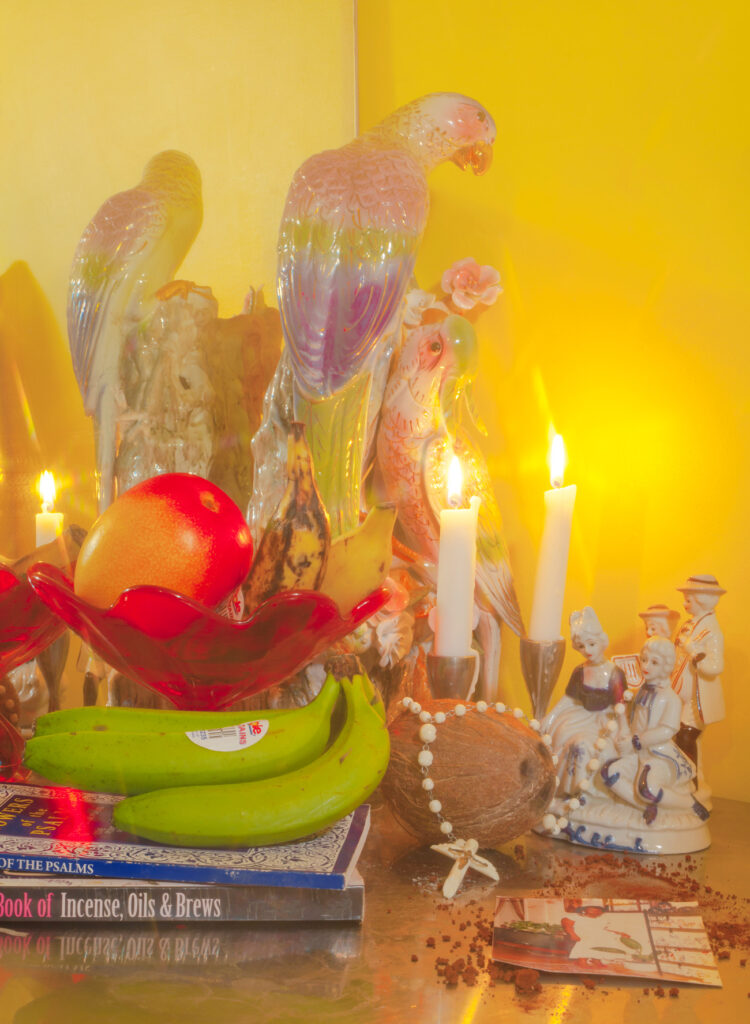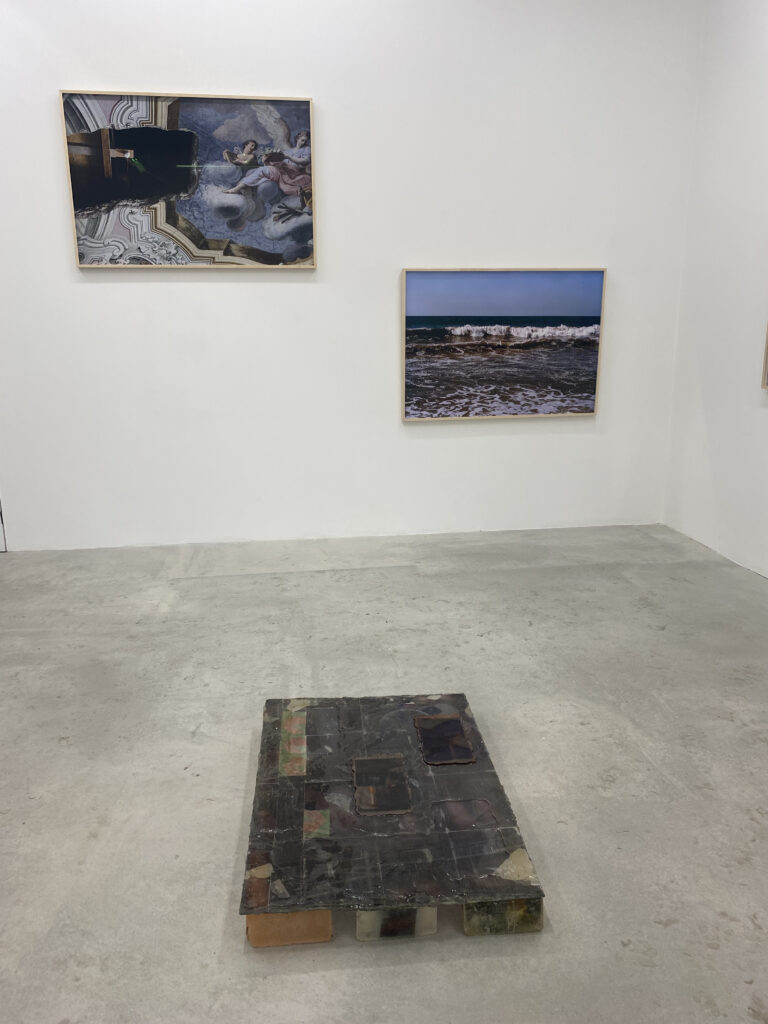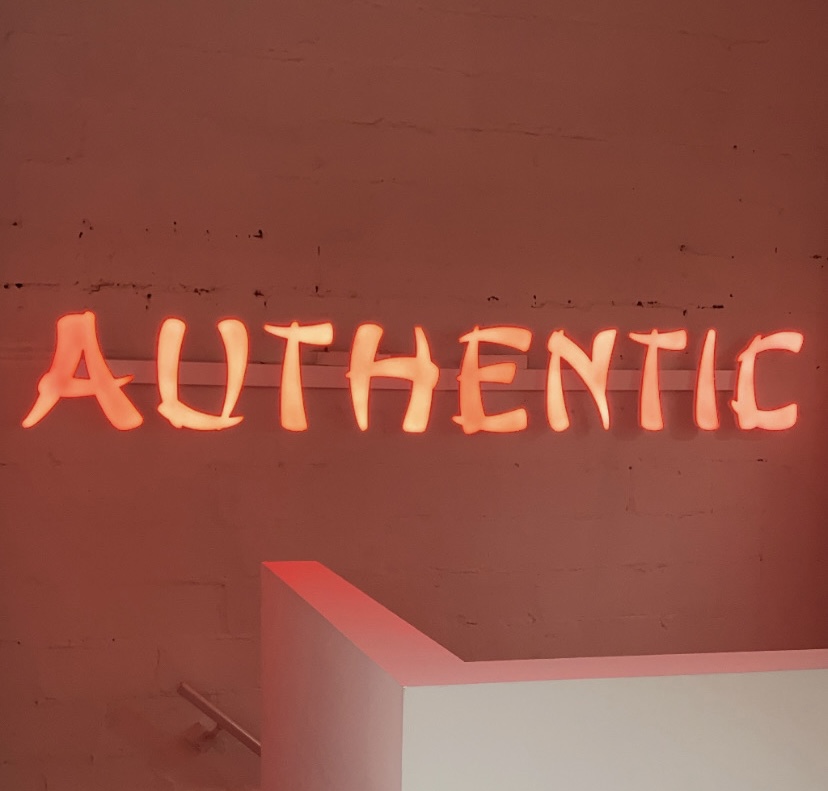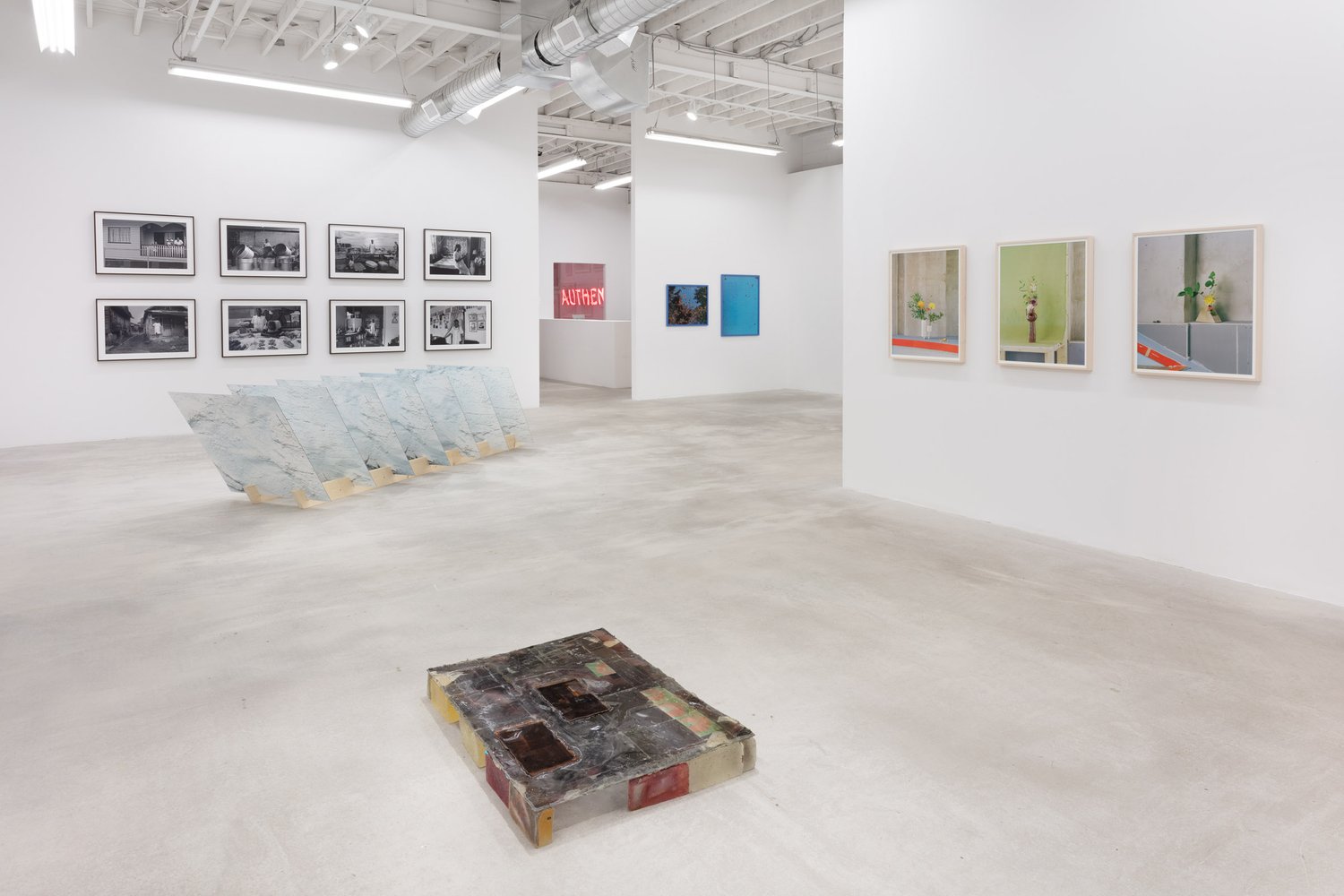COPY EDITOR: Eishvinder Gill
Presented by Patel Brown from January 8th to February 5th, 2022, Re/flex was a breathtaking group exhibition featuring the work of nine contemporary artists: Anique Jordan, Brendan George Ko, Zoe Koke, Paula McLean, Dainesha Nugent-Palache, Neeko Paluzzi, Kara Springer, Shellie Zang, and Waard Ward in collaboration with Nicholas Fleming and Darren Rigo. Through a combination of work centering lesser discussed cultural histories, political corruption, and nature’s silent tranquility, Re/flex invited the audience to question what could be lying beneath our society’s socio-political surface.
Through a combination of work centering lesser discussed cultural histories, political corruption, and nature’s silent tranquility, “Re/flex” invited the audience to question what could be lying beneath our society’s socio-political surface.
As I entered Re/flex, I was immediately captivated by the vibrant blues and pinks within Dainesha Nugent-Palache’s Can’t Spell Talons Without Salon. The image portrayed a blue-lit, white tropical bird resting on an outstretched Black arm. Donning a fresh set of hot pink acrylics, their hand was flexed as if they had just extended their arm and beckoned the bird to come home.

Nugent-Palache’s Red Earth of St. Elizabeth (What Brought Us Here) radiated with warmth and intimacy. Hung next to a brightly coloured tropical plant, this piece reminded me of childhood lunches at my great-aunts’ house growing up. The intentional clutter, the fruits, spiritual objects, books, photos, and burning candles reminded me of how she filled her Scarborough apartment with items that reminded her of life back in Aruba. Whenever my siblings and I would visit, we’d learn about our familial and cultural history – often without her having to say a word as her space spoke for itself. While my aunt’s apartment wasn’t as colorfully vibrant as Nugent Palache’s photo, she would illuminate her space with stories, good food, and laughter. I could almost smell and taste this photo and I felt like I was there.
Anique Jordan’s photographic series reflected untold stories of her familial history. The eight black and white photos were hung in vertical rows and resembled a storyboard. One central figure, representing Jordan’s mother, was present in each photo and was pictured within a house and small town. Engaging with this series of photographs felt like flipping through a family album. It made me think about the role self-documentation plays in the preservation and dissemination of one’s culture. In 2000, my family created a small book where they shared their experiences growing up in St. Kitts. 22 years later, “The Barker Chronicles” has deepened my connection to my culture despite being born and raised in what we know as Canada. While this series of photographs reflected what appeared to be everyday tasks, having something to remember those moments by is invaluable. Documenting a family’s story can ensure their history lives on and resonates with future generations.
Whenever my siblings and I would visit, we’d learn about our familial and cultural history – often without her having to say a word as her space spoke for itself.

One of the most observable pieces in Re/flex was Kara Springer’s installation. Installed on a slant, the work included seven large, double-sided prints, each resembling fresh, crisp, blocks of ice from an arctic glacier. A few feet behind this piece was Systole.
Systole by Paula McLean reminded me of that combination of dirty brown slush, asphalt, and ice that you’d find in a frozen parking lot puddle, or in a murky river. The darkly coloured sculpture was a layered assembly of resin, inkjet photos, plexiglass, and image transfers. As I looked closer at Systole and tried to make out the images beneath the resin, I wondered: What do we hide? What aspects of ourselves do we bury beneath a crystal clear, shiny exterior? As the filth of our society occasionally bubbles to the surface (cut to the truckers in Ottawa, the surveillance of Black activists in Toronto, or the police brutality at Fairy Creek etc. etc.), we are continually forced to confront the systemic white supremacy that this country was built upon. As the icy facade of our idyllic cultural mosaic continues to crack, what else will we find?
Hung directly behind Systole was Repair and Red Tide (II) by Zoe Koke. Repair was a photo of a beautiful sistine chapel-esque image with a giant hole ripped out of it. Through the hole were wires, wood, and industrial objects, almost like the interior of a house’s walls. Red Tide was a photo of a wave crashing towards the shore. If you placed yourself directly in front of Systole, facing Repair, and Red Tide you were able to engage with all three of these pieces together. McLean’s layered icy sculpture juxtaposed against Koke’s energetically charged photos invited me to wonder what lies behind the walls of our constructed society, who resides in the shadows, and who has been pushed into them? What will happen when the tide turns and change crashes in?
As the icy facade of our idyllic cultural mosaic continues to crack, what else will we find?
Depicting a variety of scenes ranging from a photographer’s self portraits in Symphonie fantastique to the mountainscapes in A thousand plateaus, Neeko Paluzzi’s photography shared intimate scenes and historical explorations. Most notably, Paluzzi utilized deep-fake technology in his work. Deep-fakes are similar to Instagram or Snapchat filters. However, they are terrifyingly accurate, have the ability to change your voice, and can allow you to convincingly impersonate another individual. Learning that deep-fake technology was used to create these photos was very unexpected. But in a way, that initial shock spoke to the nature of all filters and deep-fakes. Used to distort and conceal reality, these technologies alter how we perceive the world around us. Deep-fake technology has been used to spread political deception and polarizing disinformation. While not inherently sinister, the existence of these technologies force us to continually evaluate how we engage with the media and deeply question the content we believe to be true.
To the left of these pieces were three photos of beautiful floral arrangements by Waard Ward in collaboration with Nicolas Fleming and Darren Rigo. Surrounded by concrete walls, the floral arrangements brought color and an elegant beauty to their mundane surroundings. Waard Ward is a collective that trains refugees and newcomers to become florists. The photos by Waard Ward et.al reminded me of my interactions with community organizers in Toronto and the ways in which they work to “sow seeds of change”, creating beauty despite the ugliness and pain that is state violence, white supremacy, and systemic oppression.
Brandon George Ko’s Monarch Vignette I was a projected video installation that created a beautiful, serene space filled with small, but mighty Monarch butterflies. I felt so much peace standing alone in the dark, enclosed space, with the orange and black butterflies fluttering in front of me.

Last, but certainly not least, is Shelle Zhang’s Authentic. This bright, red neon sign was the first and last piece that I saw in Re/flex. I didn’t realize it was a part of the exhibition until the very end, but there’s something really beautiful about its physical disconnect from the rest of the work. In our society, we push each other to evolve into new selves and we push each other to perform. We expect that everyone will work within a capitalistic system and will morphe into the most marketable version of themselves. We set authenticity as the pinnacle, but once someone authentic emerges, we begin to become them. If you choose not to engage in this system, you’ll find yourself on the outside. Until your outside becomes mainstream and the cycle starts again. What does it mean to be authentic in a culture that bottles and sells authenticity? What does it mean to be authentic when you’re disconnected from your cultural roots? How does authenticity survive when we could quite literally become someone else and lose ourselves beneath the surface? How do we preserve our vibrant colors and feel safe enough to come home to ourselves? Be authentic, but don’t let them take your spirit. Evolve, but don’t lose your soul.
What does it mean to be authentic in a culture that bottles and sells authenticity?
Collectively, Re/flex made me wonder: How do we engage with and preserve our cultural histories? What lies beneath our societal structures and the personalities we present to the world? If exposed, what will we discover?























